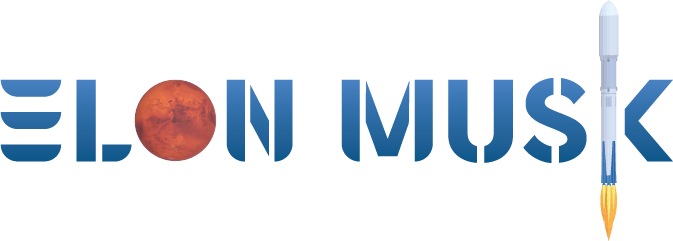
Chip Industry Week In Review
- by Semiconductor Engineering
- Aug 02, 2024
- 0 Comments
- 0 Likes Flag 0 Of 5

October 25th, 2024 -
By: The SE Staff
Europe’s top court ruled in Intel‘s favor, voiding a $1.1 billion fine imposed by the European Union and dismissing charges of anti-competitive behavior.
IBM released yield benchmarks for high-NA EUV, which serve as proof points that the newest advanced litho equipment will enable scaling beyond the 2nm process node. Also on the lithography front, Nikon is developing a maskless digital litho system for advanced packaging applications, with a 1µm line/space resolution, for 2026 release.
Fig.1: High NA EUV lithography enables continuous scaling of copper damascene interconnects down to 21nm pitch using single expose patterning. Source: IBM.
Xiaomi reportedly successfully taped out China’s first 3nm mobile chip, according to the South China Morning Post. Few details were made public, including performance metrics.
Is the wide-bandgap market starting to shift direction? Wolfspeed suspended plans to build a €3 billion plant in Germany that would have focused on automotive SiC chips, citing slow EV adoption, according to Reuters. Meanwhile, Texas Instruments, is quadrupling its manufacturing capacity for gallium nitride (GaN) power semiconductors, boosting capacity at its existing Texas GaN plant and its fab in Aizu, Japan, which just started production.
CSIS Machine-Learning-based Side-Channel Attack Detection for FPGA SoCs (Karlsruhe IT)
A Survey on SoC Security Verification Methods at the Pre-silicon Stage (U. of Florida)
PROTECTS: Progressive Rtl Obfuscation with ThrEshold Control Technique during architectural Synthesis (U. of Hyderabad, et al)
IBM launched its Guardium Data Security Center with unified, SaaS-first data security capabilities during hybrid cloud, AI, and quantum transformation.
The U.S. Securities and Exchange Commission charged four companies with making materially misleading disclosures regarding cybersecurity risks and intrusions.
CISA issued a number of alerts/advisories and endorsed the Department of Homeland Security’s “See Something, Say Something” campaign.
Product News
Arteris announced the availability of a pre-verified data center solution that combines the company’s Ncore cache-coherent interconnect IP with SiFive’s P870-D CPU. The pre-verified solution is aimed at providing fast, low-risk development cycles for data centers.
Arm released its ExecuTorch Beta, which combines the company’s compute platform with a framework from Meta’s PyTorch team. The new technology will be targeted at AI models on edge devices. ExecuTorch can be used across Arm’s Cortex-A CPUs and Ethos-U NPUs, and integrates micro-kernels optimized for 4-bit quantization.
Arm also announced its Compute Subsystems for Client, which boasts a 46% improvement in time-to-first-token for AI applications. The CSS incorporates the Arm Cortex-X925 CPU and Immortalis-G925 GPU to handle AI applications on smartphone devices.
Keysight and Siemens EDA expanded their partnership to combine the former’s Advanced Design System with the latter’s Xpedition Enterprise Suite of EDA tools. The product, which is to be used for designing digital systems and RF circuits, is included in Keysight’s Advanced Design System 2025 and Siemens’ Xpedition Enterprise release 2409.
Siemens EDA also introduced the latest iterations of its Solid Edge software, including Solid Edge X, which is accessible as a cloud-enabled secure software as service. The new versions include several improvements, including improved workflow and user interface, more advanced customization, elevated sheet metal design, and enhanced collaboration features.
Toray Industries debuted high-speed laser transfer and bonding technology for mounting optical semiconductors made from indium phosphide and other III-V compounds on silicon substrates.
Tanaka Precious Metals uncorked a palladium alloy designed for probe pins used in the final testing stage of semiconductor packages.
SK Keyfoundry expanded its high-voltage foundry services portfolio with a high-voltage IC process.
Universal Robots unveiled its UR AI accelerator, including features such as pose estimation, tracking, object detection, path planning, and image classification.
Automotive
Infineon released its CoolSiC Schottky diode 2000 V G5, the first discrete SiC diode with a breakdown voltage of 2000 V, suitable for applications with DC link voltages up to 1500 VDC and with current ratings from 10 to 80, ideal for solar and EV charging.
Workhorse Group adopted Siemens’ Xcelerator portfolio to streamline activities as it builds electric trucks for sustainable last mile delivery.
NHTSA opened an investigation into Tesla due to four reports of vehicles crashing in areas of reduced roadway visibility while full self-driving mode was engaged.
Stellantis and Factorial are road-testing certain EVs with solid-state batteries.
Research
Dongguk University researchers developed a self-compliant memristive device capable of multilevel operation, and a crossbar array for forming neural networks.
University of Sydney researchers used lasers to generate guided sound waves on the surface of a chip via special glass to allow interactions between light and sound. The design has potential for environmental sensing and information processing devices, and the Stimulated Brillouin scattering technique has potential in 5G/6G networks.
A TU/e researcher proposed inverse estimation for multi-scale models via an ML-based reduced surrogate, with applications in semiconductor manufacturing.
imec looked at how silicon nitride photonics can help develop proteomics solutions, which entail identifying and quantifying the full spectrum of proteins in a cell or tissue.
Events and Further Reading
Please first to comment
Related Post
Stay Connected
Tweets by elonmuskTo get the latest tweets please make sure you are logged in on X on this browser.
Sponsored
Popular Post
Tesla: Buy This Dip, Energy Growth And Margin Recovery Are Vastly Underappreciated
28 ViewsJul 29 ,2024






 Energy
Energy



















